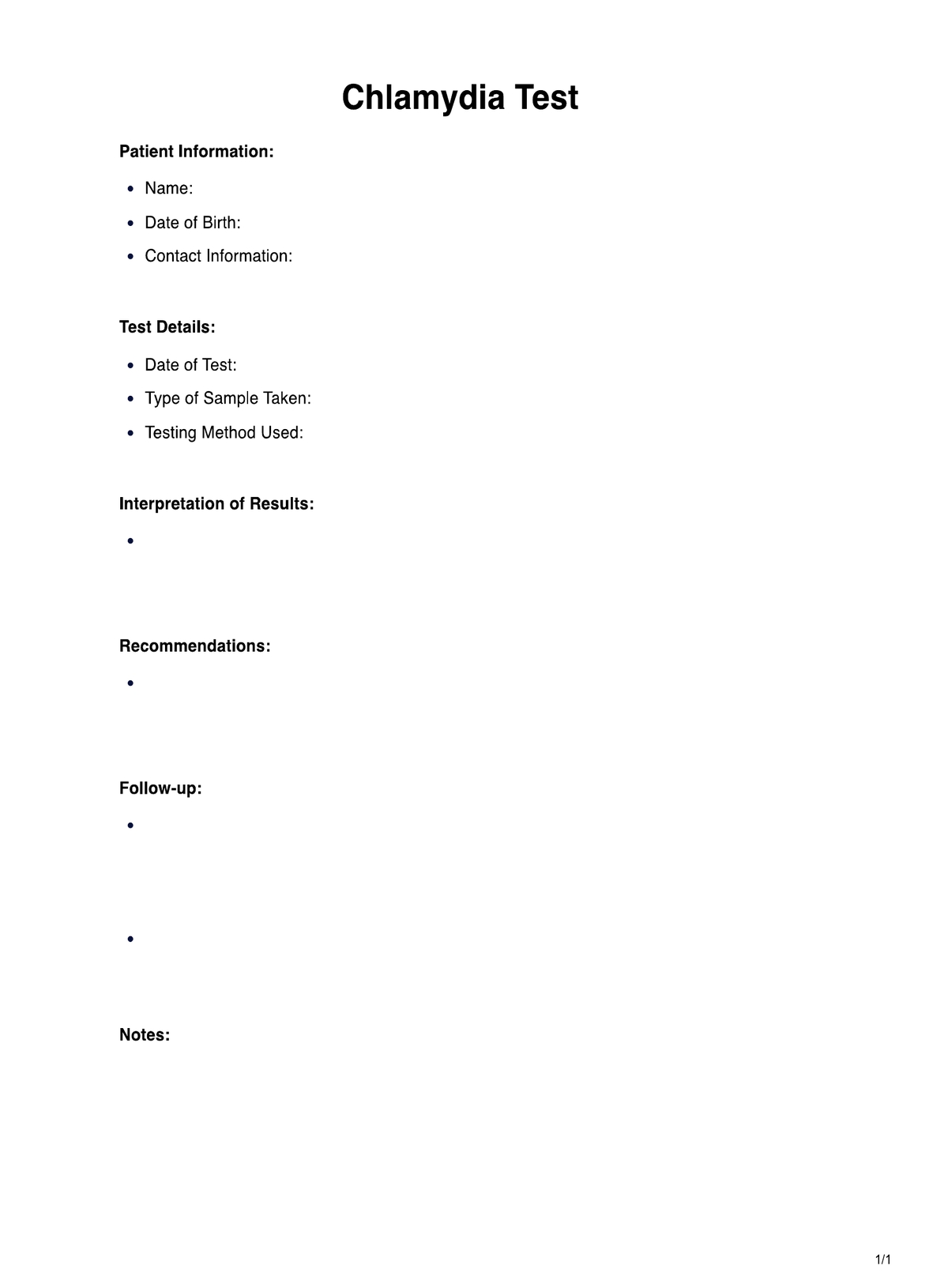Anyone who is sexually active or engages in unprotected sex should consider Chlamydia testing, especially individuals under 25, pregnant women, and those with multiple sexual partners.

Chlamydia
Get a confidential Chlamydia Test for early detection and peace of mind: fast results and discreet service. Take charge of sexual health today.
Chlamydia Template
Commonly asked questions
Chlamydia often shows no symptoms in the early stages. However, when symptoms occur, they might include abnormal genital discharge, pain during urination, and pelvic pain. Many individuals may not realize they are infected and can unknowingly spread the disease.
The test can involve a urine sample for men or a cervix swab for women. Other sites, like the urethra, throat, or rectum, might also be sampled based on the situation. These samples are processed in a laboratory using various testing methods.
EHR and practice management software
Get started for free
*No credit card required
Free
$0/usd
Unlimited clients
Telehealth
1GB of storage
Client portal text
Automated billing and online payments











